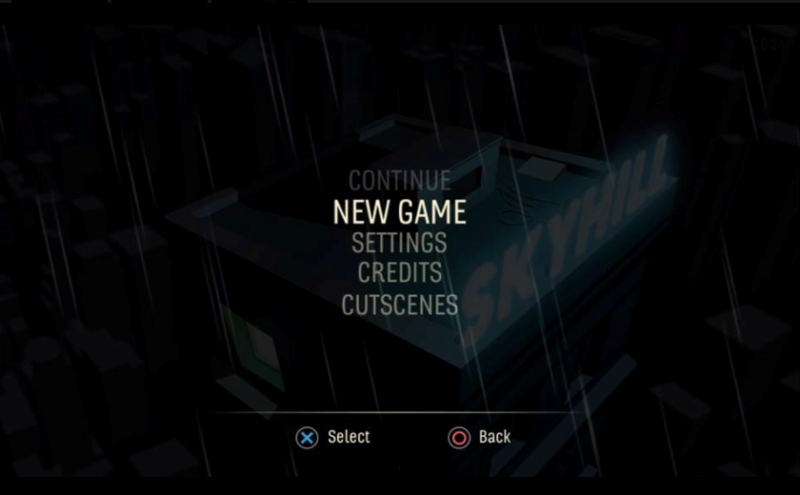
Environments that induce in players fear over what may be hiding behind the next corner. Plausible and compelling stories of a person’s desperate plight to live to see another day. Randomly generated maps that don’t feel overly repetitive. Roguelikes situated in post-apocalyptic realities live or die based on how well they implement these three core elements. So while developer Mandroga and publisher Daedelic Entertainment imbue their 2D survival game, Skyhill, with some positive attributes, the game ultimately suffers due to its poor incorporation of the three aspects that make roguelikes worth playing.
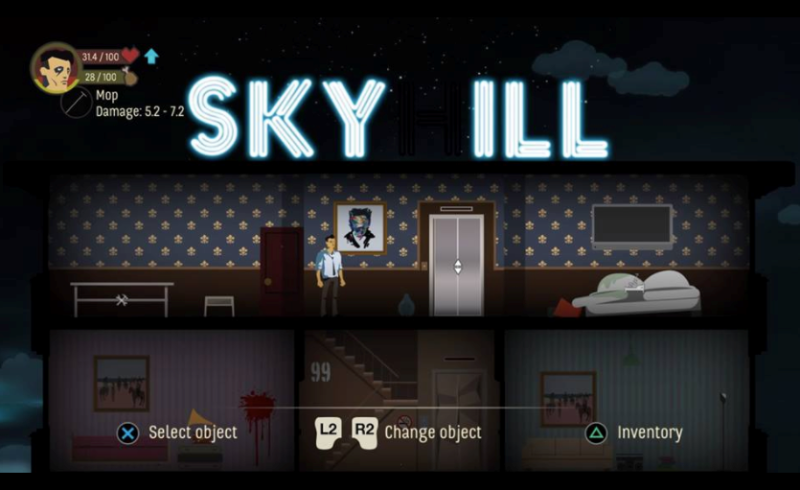
While Skyhill originally came out in 2015 on PC, it only now is making its way over onto Sony’s PlayStation 4 and Microsoft’s Xbox One. The game does not contain any marked improvement in the three years since its initial release. Before players can dive into a new adventure in the game’s eponymous setting, Skyhill gives exposition. Protagonist Perry Jason is only in town for a few days and has some money to spend, so he decides to book the penthouse VIP suite on the bio-weapon-proof 100th floor of the glitzy Skyhill hotel. He receives the joyous news that World War III is coming to an end, only to look up and see a bio-bomb that turns people into mutants explode. Perry stays locked in his suite for days before hunger sets in, forcing him to brave the post-apocalyptic world in order to scrounge for enough food to stay alive.
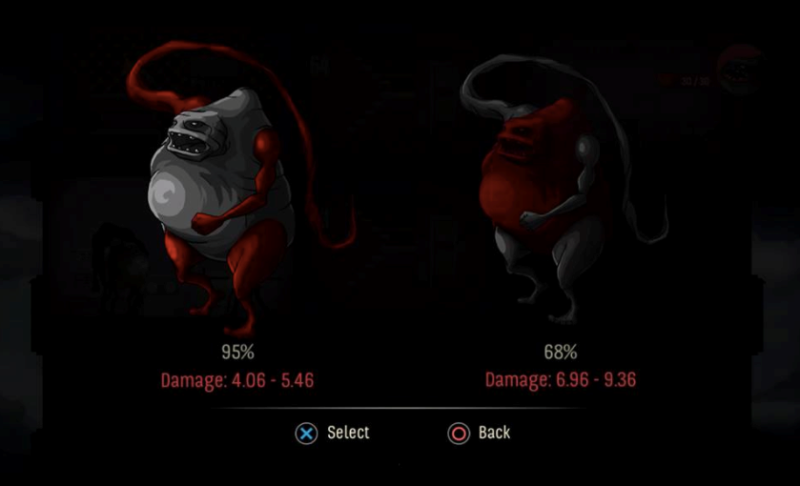
Players begin to control Perry at this point. Their objective is to guide Perry down all 100 floors of the Skyhill hotel and escape, even though it’s not clear whether the world around the hotel is in any better repair than the hotel itself. Preventing the player from achieving their goal are a stomach that demands food and the former hotel employees and guests, who have mutated into hideous monsters due to the bio-bomb.
While a mysterious hotel crawling with mutants ready to kill at a moment’s notice sounds like the perfect setup for a survival game with strong horror elements, Skyhill somehow manages not to be all that scary. The game’s character models lack detail, and monsters that are supposed to be horrific actually appear somewhat globular. There is a lot of repetition in terms of the mutant types as well, so players can eventually come to expect what type of foe they’re going to find when they explore down the next floor.
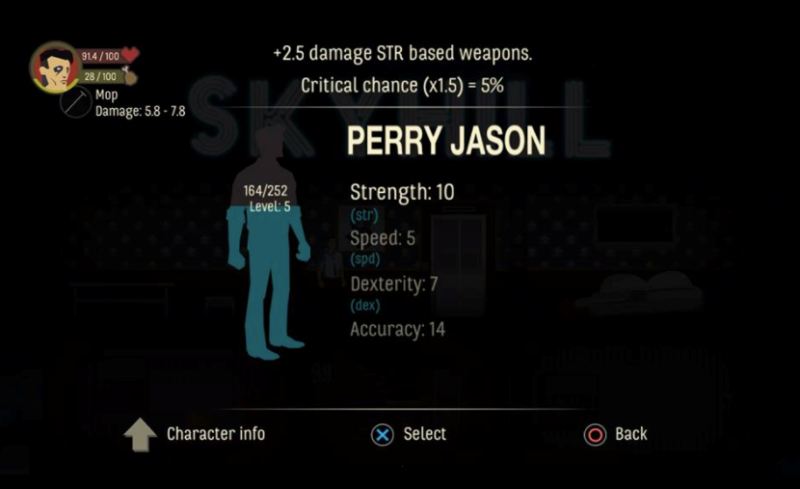
The combat system contributes to the game’s inability to terrify. Combat revolves around percentages; players are presented with two or three options of where to hit a mutant, where one will inflict more damage but is more likely to miss than the other. This system is not terribly complicated, but that fact isn’t necessarily a negative. However, should an enemy prove to be too tough to handle, players can, for the most part, just walk out of the room, craft better items and use medicine, and then combat their adversary a second time.
To face off against the stronger mutants found in Skyhill’s lower levels, players need to craft helpful items and upgrade Perry’s attributes. The crafting system constitutes the heart and soul of Skyhill. While the game lets players know what is required to craft better items, it forces players to explore every room of the Skyhill hotel in order to find the resources necessary to create them. Players craft weapons, food recipes, and medicine, and the game really makes them think about how they’re going to budget the items they’ve scavenged. In all, the crafting system really serves as Skyhill’s biggest draw.
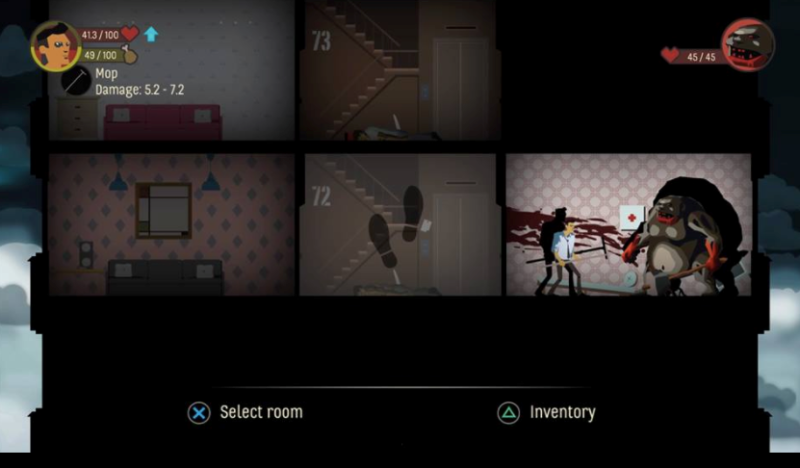
The upgrade system, however, is extremely basic and not very well fleshed out. Just like in RPG’s, players level up as they progress in the game. Leveling up earns them skill points, which can be invested in any of four attributes: strength, speed, dexterity, and accuracy. Most of the time, upgrading doesn’t really feel as though it produces tangible effects due to the percentage-based combat. However, heavily investing in one tree will yield noticeable results.
The hotel itself also ruins the sense of immersion that players may feel. The lead-up to the gameplay suggests that Skyhill is supposed to be glamorous, yet its rooms are anything but. Hideous wallpaper and dull, commonplace furniture populate every room in Skyhill. Furthermore, many of the items scattered throughout the map feel as though they would be more at home in a large warehouse than in the guest rooms of a five-star hotel.
If players fail to escape from the hotel, they need to begin the game anew. However, based on how well they did in their previous attempt at the game, players can utilize certain perks. The perks available to players are not the only things that change with each new adventure, though: the map is randomly generated, so the contents of each room in the Skyhill hotel change as well. This helps repress feelings of repetitiveness, yet it’s also brings to question how to balance the line between exiguity and abundance. Players can go over ten floors without encountering a mutant or, adversely, find a long succession of rooms that have no useful resources.
Ultimately, Skyhill’s strong crafting system is not enough to outweigh the game’s negatives. Skiyhill is definitely capable of proving addictive, but there are many other roguelikes out there that are worth exploring first.
Rating: 6.6/10





More Stories
The Hungry Lamb: Traveling in the Late Ming Dynasty Review for Steam
Wishlist Sonorous Deep Down Below Continuous Fight for Survival Game on Steam
REIGNS BEYOND Review for Steam